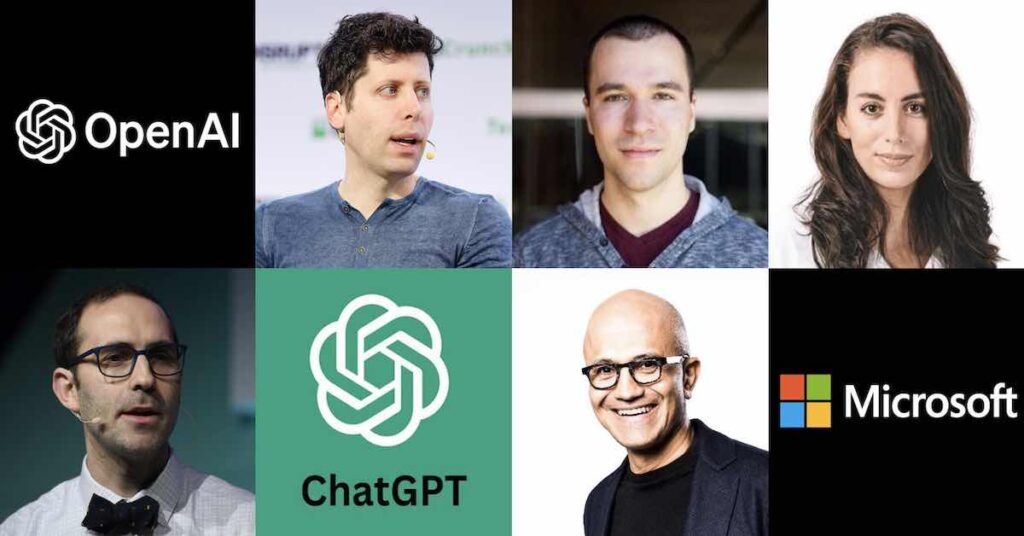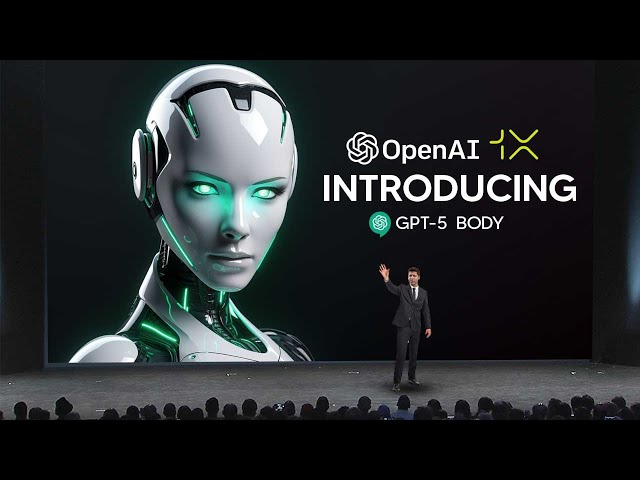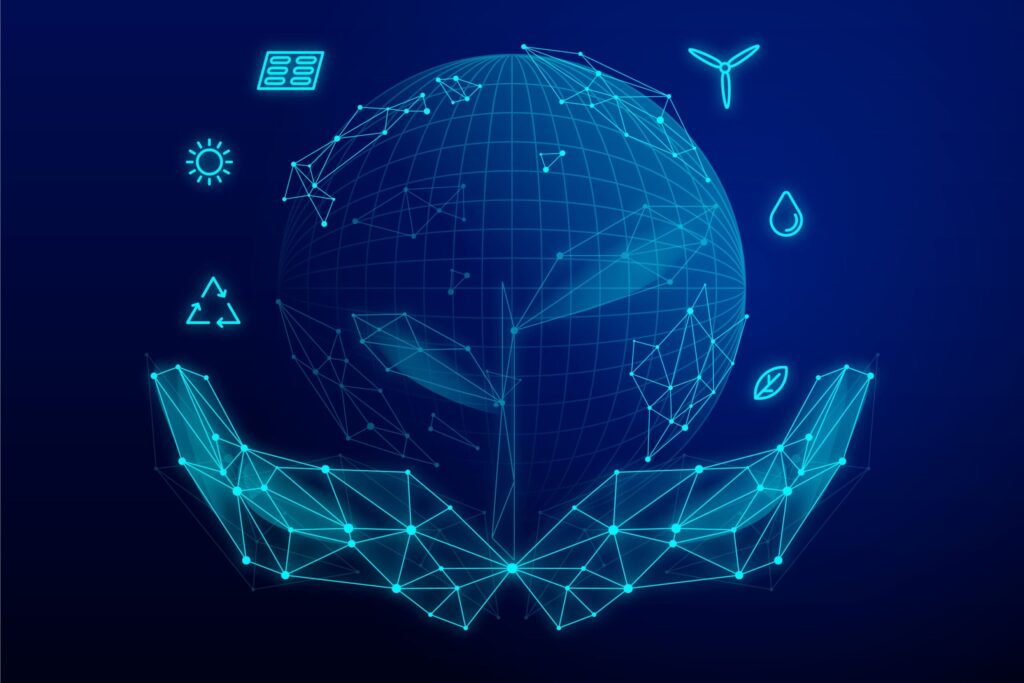Unless you’ve been living under a rock for the past 2 years, you would have heard of ChatGPT, the first advanced artificial intelligence accessible to everyone.
The success of OpenAI, the parent company of ChatGPT, is one of the most interesting case studies of the decade.
With that said, that’s what we’re going to discuss today.
In this blog, we’ll cover all important milestones, the building of the initial foundation, and everything there is to learn from OpenAI.
Let’s get right into it.
Visionary Founders & Initial Days
The story of OpenAI began with a dream shared by Elon Musk, Sam Altman, Ilya Sutskever, and Greg Brockman as a non-profit.
Musk, known for his ventures like SpaceX and Tesla, along with Altman, the force behind Y Combinator, brought their visionary outlook to OpenAI. Their objective was clear: to advance AI in ways that benefit humanity as a whole, ensuring the technology developed is transparent, secure, and universally beneficial.
They brought together some of the sharpest minds to work on achieving AGI safely.
From the get-go, OpenAI was all about trying new things fast. They made headway in deep learning and reinforcement learning and came out with the ‘OpenAI Gym’ in 2016. This was a set of tools for developers to test and improve reinforcement learning algorithms.
In 2018, OpenAI showed what its reinforcement learning could do with the ‘OpenAI Five’ project. They trained five AI agents to play ‘Dota 2’, a complex team-based game, and these agents learned to play together like a well-oiled machine.
A big leap came in June 2018 when OpenAI published a paper on “Improving Language Understanding by Generative Pre-Training”. This laid the groundwork for what would become ChatGPT, the main product that many people know OpenAI for today.

The Big Break
Initially established as a non-profit, OpenAI made a strategic pivot towards a capped-profit model to facilitate its growth while adhering to its core principles in 2019. This transition was marked by significant milestones, including a $1 billion investment from Microsoft, underscoring a partnership that aimed to accelerate OpenAI’s research capabilities.
OpenAI’s ‘OpenAI Gym’ and Universe platforms further exemplified its commitment to fostering an environment where AI research and development can flourish.
The Era of GPT
In 2020, OpenAI introduced GPT-3, thanks to a boost in funding. It was a big deal because GPT-3 could write text that sounded a lot like a human did it. This was a significant step forward for OpenAI and the whole AI field. As OpenAI kept growing, its language models got bigger and smarter.
But OpenAI didn’t just stick to language models. In 2021, they launched Codex, which is great at coding, and DALL-E, which can create original art from what you tell it.
Then, in December 2022, OpenAI brought out GPT-3.5, setting the stage for ChatGPT, a new app designed for everyday users. ChatGPT quickly became a hit, reaching 100 million users faster than any app before. Riding on this wave, OpenAI introduced a way for users to pay for more features and launched GPT-4. This new version was about ten times more powerful than the last and could understand text, images, and voice. They didn’t stop there; at an event on November 6th, 2023, they showed off even more tools for developers and an even more powerful version of GPT-4.

Facing the Future
As OpenAI continues to push the boundaries of what’s possible in AI, its future plans include deepening collaborations with leading tech giants and expanding its foray into areas like video processing, robotics, and natural language processing.
These ventures are evident by the recent updates, which include –
- SORA
2 weeks back, on a crisp Friday, OpenAI released their very own text-to-video generation model named SORA. SORA is a highly capable model that generates ultra-realistic videos with complex camera moments and multiple characters with just a text prompt.
Unlike other video diffusion models in existence, SORA is also capable of generating videos up to 1 minute long. Currently, the model is only open to a select few designers, filmmakers, and researchers.
- Partnership with FigureAI:
OpenAI has just partnered with the same company that brought us the robotics marvel Figure 01, learning everyday tasks entirely using a neural network.
The Sam Altman-led AI is now moving in the direction of building humanoid robots and other hardware designed to be deployed in the workforce.
What can you learn from OpenAI’s Success?
OpenAI’s journey from its foundational projects to the launch of ChatGPT offers invaluable lessons for startups, SMEs and entrepreneurs aiming to leave a mark. Let’s take a quick peek.
Strategic Timing
The story of OpenAI’s rise is a testament to the critical importance of timing in the startup ecosystem. Just as YouTube harnessed the wave of Adobe’s Flash Video player, OpenAI capitalized on the development of transformer models, paving the way for GPT-3 and ChatGPT.
This strategic alignment with technological readiness and market demand underscores the essence of timing—recognizing when a technological breakthrough meets a market ripe for innovation. Unlike Pets.com, which soared too early without a sustainable model, OpenAI’s timing was impeccable, launching ChatGPT when the world was ready for advanced conversational AI.
Defining the Problem with Precision
At the heart of OpenAI’s success is the ability to define and understand the problem at hand deeply.
Sam Altman’s reflection on the transition from GPT-3 to ChatGPT highlights the significance of not just the technology but its application and accessibility. The lesson here is profound: innovation begins with a problem well understood.
OpenAI’s focus on enhancing AI communication through simplicity and user-centric design, as opposed to adding complexity, has been key. This approach, reminiscent of Steve Jobs’ advocacy for elegant simplicity, demonstrates that true innovation solves problems in a way that resonates deeply with users.
Vision and Agility
OpenAI’s story shows how a clear goal and quick action lead to success. Think about how a small tech company might start with a big dream, like making talking to computers as easy as chatting with a friend. OpenAI did just that with ChatGPT. They were quick to try new ideas, learn from them, and make changes fast. This fast-moving approach lets small companies like OpenAI do big things, even when the tech world changes quickly. They keep their eyes on their main goal but are always ready to shift how they get there based on what they learn. This mix of keeping a clear aim and being able to move quickly is key for any startup wanting to make a big impact.
The Voice of the Customer and Product Execution
OpenAI’s transition to a more user-friendly ChatGPT underscores the importance of being attuned to the customer’s voice. The iterative improvements driven by community feedback exemplify a user-centric development approach.
This commitment to listening, adapting, and improving in response to user needs is a cornerstone of OpenAI’s strategy. By acting as the customer’s advocate, founders can guide their teams toward solutions that not only meet technical specifications but also deliver real value and satisfaction to end-users.
The Power of Early Adaptation
The engagement of early adopters has been pivotal in OpenAI’s trajectory. These users, often facing the problem most acutely, provide critical feedback that guides the evolution of the product.
For ChatGPT, developers and businesses seeking reliable conversational AI became champions of the technology, influencing its refinement and broader application. This interaction with early adopters is an important feedback loop, providing insights that can shape product development to better meet market needs and expectations.
Final Verdict
OpenAI’s story is pretty fascinating. It started with the big dream of building AI that helps everyone and is safe to use.
From playing games to generating art, and now exploring the future with robots, OpenAI keeps showing us what’s possible when you blend ambition with a genuine desire to make technology work for the greater good.
As we look ahead, it’s exciting to think about what they’ll come up with next, and how it’ll continue to change our world in small and big ways.
For more interesting insights and thought leadership content on technology and mobile app development, stay tuned and keep checking our blogs and insights section.




[…] strategic partnerships with AI tech providers like OpenAI or […]